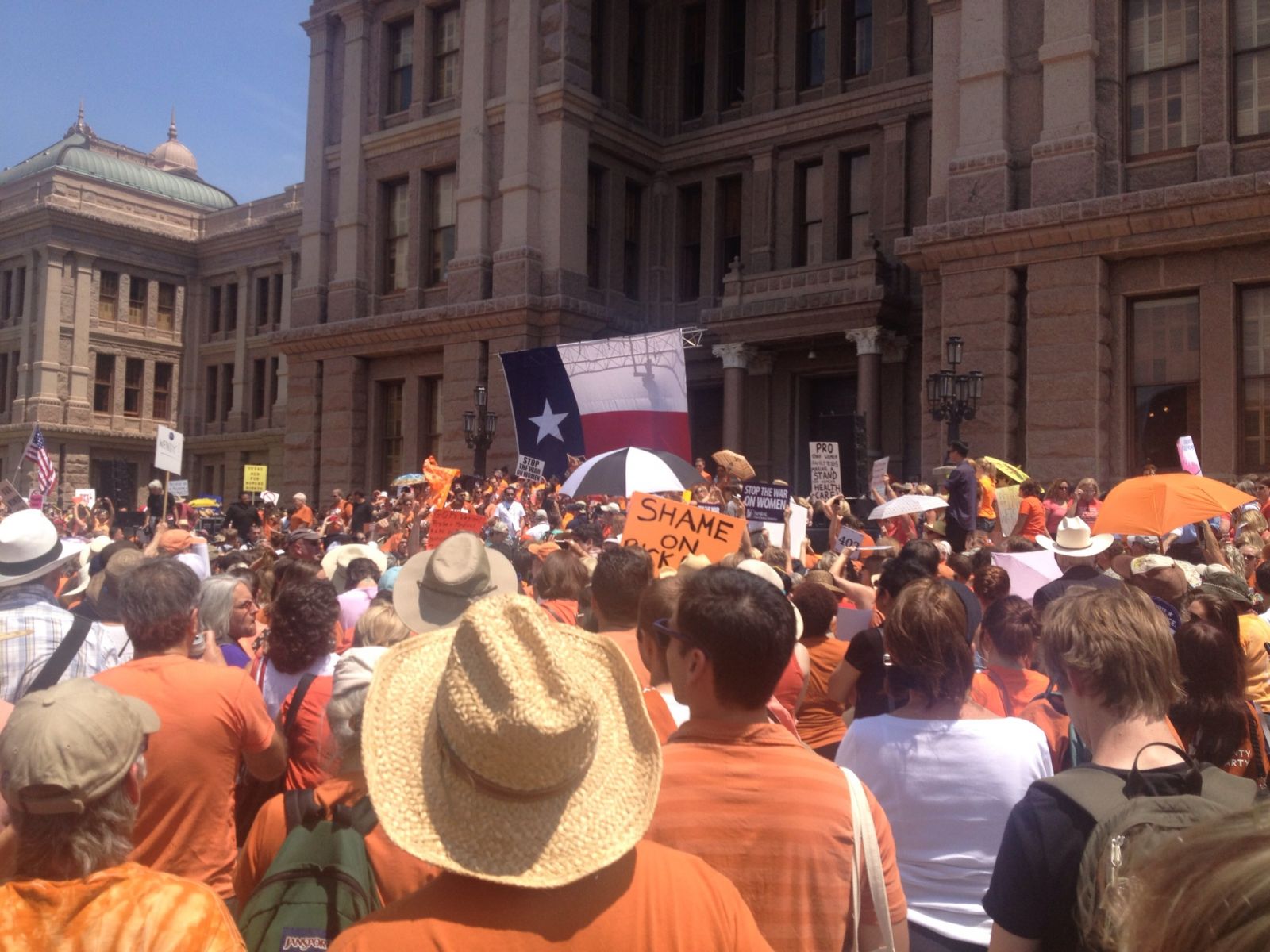The Feminist Policy Alliance and the Texas Observer invite you to a panel discussion on Sept. 4 on the battle over women’s health in Texas and how recently passed legislation is changing the health care — and political — landscape in Texas.
In a state where only 27 percent of the voting-age population participated in the last gubernatorial election, thousands of people filled the Texas Capitol this summer dressed in orange or blue, protesting, visiting lawmakers, testifying in public hearings and watching floor proceedings from the galleries. For many of them, it was their first time participating in the legislative process. In fact, activists were registering people to vote in the Capitol rotunda.
After a fairly calm regular legislative session, Gov. Rick Perry immediately called lawmakers back to address transportation funding, adding abortion and juvenile justice to the agenda midway through the 30-day special session. With different rules in a special session,[1] bills addressing abortion restrictions, transportation funding and capital sentencing for 17-year-olds were set for passage on the final day.
This was when a lot more people started to pay attention. Sen. Wendy Davis — already known for her 2011 filibuster that forced a special session on education funding — vowed to filibuster the abortion-restricting legislation. As she entered the Senate that day in now-famous pink running shoes, pundits speculated as to whether she was catheterized. After 11 hours of filibuster and two hours of debate over whether the filibuster was over, Lt. Gov. David Dewhurst and the bill’s Senate supporters voted to pass the bill just as the clock ran out.
Time was on the side of Sen. Davis and the bill’s other opponents in the first special session. But no one can filibuster for two or three weeks under Texas’ strict rules (the record is 43 hours). Gov. Perry signed House Bill 2, the second special session’s omnibus abortion bill, into law in July. The legislation does four things:
- Bans abortions after 20 weeks gestation — the so-called fetal pain provision.
- Requires any doctor performing an abortion to have admitting privileges at a hospital within 30 miles of the facility where the procedure is taking place.
- Requires a physician to administer abortion-inducing drugs in person rather than prescribing them for home use.
- Increases the standards of abortion facilities to those of ambulatory surgical centers.
That final provision would close all but six of the state’s abortion facilities, leaving none remaining in West Texas. While that portion of the law doesn’t go into effect until next year, the other regulations take effect this October.
While the legislative fight is over (for now), the battle wages on. The Department of State Health Services held open meetings on its rules for implementing House Bill 2, and both sides turned out, though the crowds were smaller. For many, eyes are already on the 2014 elections. Attorney General Greg Abbott, more staunchly pro-life than Perry or Dewhurst, is considered a favorite for governor, while pro-choice and Democratic groups are calling on Davis to run against him.
What comes next? Will 36 clinics close or stop providing abortions next year? How will the restrictions affect the availability of drug-induced abortions? Will the orange- and blue-shirts retain their momentum in the 2014 elections? What might the 2015 legislative session hold?
Texas Observer Editor Dave Mann will moderate a conversation with Rep. Jessica Farrar, NARAL Pro-Choice Texas Executive Director Heather Busby and activist Jessica W. Luther on these questions and more at the LBJ School’s Bass Lecture Hall on the evening of Sept. 4.

